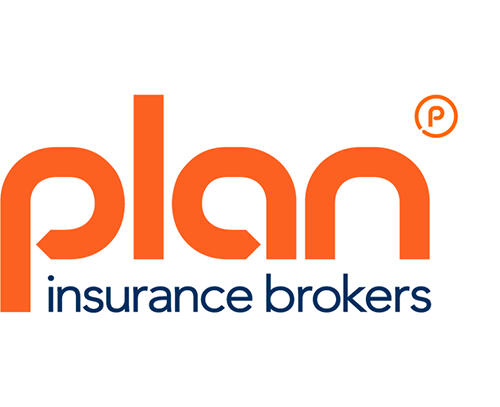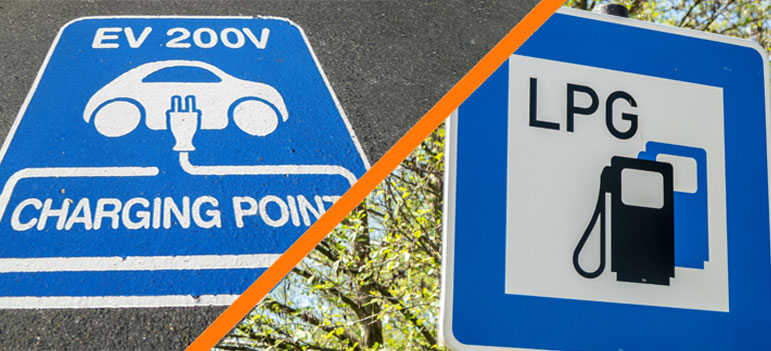With ULEZ requirements having come into force on January 1st of this year, many cabbies are trying to decide how to get the best value for money on a compliant vehicle over the coming years.
Decisions will very much depend on drivers’ individual circumstances. Below we consider a case study of one particular driver (who wishes to remain anonymous).
We look at the upfront and ongoing costs of staying in a TX4, leasing a new electric TX or investing in a Gas Conversion.
The Scenario
To many longer serving drivers in the cab trade, this should hopefully sound a fairly typical situation. Our driver is in his mid-50’s. Although he’s not earning as much as he did in days gone by, his financial pressures are less heavy than they used to be as his kids are grown up and his mortgage is less than it used to be.
Semi-retirement, or at least slowing down work-wise is on the horizon in the not too distant future. However, he still wants the option of remaining active in the trade over the mid to long-term future.
So, in this instance, the driver owns his 10-year-old TX4 outright. He’s had it valued at approximately 10K. He’s had a few issues with it in recent years and is loath to spend any more money patching it up, only for something else to crop up.
Therefore, he’s considering his options and trying to determine the best way to go in terms of a vehicle purchase.
Cost Comparison Tables
| Upfront Costs | Diesel – TX4 | Electric – TX (Leased) | Electric – TX (Owned) | LPG Conversion |
| Vehicle Purchase | N/A | N/A | £55,000 | £0 |
| Conversion Cost | N/A | N/A | N/A | £12,990 |
| Total | £0 | N/A | £55,000 | £12,990 |
| Ongoing Costs | TX4 | TX (Leased) | TX (Owned) | LPG Conversion | ||||
| Annual | Weekly | Annual | Weekly | Annual | Weekly | Annual | Weekly | |
| Vehicle Lease | N/A | N/A | £9,704 | £187 | N/A | N/A | N/A | N/A |
| Insurance | £990 | £19 | £1,140 | £22 | £1,140 | £22 | £1,050 | £20 |
| Diesel | £2,921 | £56 | N/A | N/A | £0 | N/A | £0 | N/A |
| Electric Charging | N/A | N/A | £823 | £16 | £823 | £16 | £0 | N/A |
| Gas | N/A | N/A | N/A | N/A | N/A | N/A | £1,404 | £27 |
| Servicing | £140 | £3 | £0 | £0 | £0 | £0 | £150 | £3 |
| Maintenance | £600 | £12 | £0 | £0 | £0 | £0 | £600 | £12 |
| MOT* | £110 | £2 | £0 | £0 | £0 | £0 | £110 | £2 |
| Road Tax | £520 | £10 | £0 | £0 | £0 | £0 | £510 | £10 |
| Total | £5,281 | £102 | £11,667 | £225 | £1,963 | £38 | £3,824 | £74 |
| Overall Costs over 3 years | TX4 | TX (Leased) | TX (Owned) | LPG Conversion |
| Annual | £5,281 | £11,667 | 20,296 | £8,154 |
| Weekly | £102 | £225 | £390 | £157 |
| 3 Year Total | £15,843 | £35,001 | £60,889 | £24,462 |
Gas Cab Analysis
In this scenario, the weekly running costs of the Gas Cab are far lower than either the new TX or the TX4 still running on diesel. However, it’s very important to remember that they don’t take into account the fact that he would have almost £23,000 tied up in the vehicle. Our cabbie wouldn’t be able to afford the Gas Conversion outright and would need to finance it somehow. In a future blog, we’ll discuss finance options in more detail, for the time being, there’s too much additional info to consider, but it’s definitely important that those costs are kept in mind.
In terms of insurance costs, the gas cab is only marginally more expensive, as our policy would cover the cost of the conversion. This is done on an “agreed value” basis to include protection for drivers against the potential risk of the vehicle being stolen or involved in an incident that might render it a total write off. In these circumstances, without the agreed value, the drivers’ investment in the conversion would be lost.
As the TX4, in this case, is currently only 9 years old, fitting a gas conversion in order to extend its shelf life beyond TfL’s existing 15 year maximum age limit isn’t a priority. If it were an older vehicle the conversion could make his cab compliant with TfL’s regulations for up to another 5 years. The re-sale after that period is difficult to predict but presumably, after it’s no longer licensable by TfL, a number of authorities across the country will still find the vehicle acceptable and the investment will retain a degree of value.
For our cabbie, due to the age of his cab, plus the fact he’s already spent out a large amount of money in recent years on significant maintenance issues, including an engine replacement, he’s ruled out the Gas Cab conversion. However he was impressed by the performance of the test vehicle he drove, and if he had a lower value vehicle he may well have plumped for this option.
TX Analysis
This particular cabbie drives on average 50 miles per day in town, plus he has a 20-mile round trip commute. From speaking to other drivers he believes the range of the electric taxi should comfortably cover the 70 miles total distance he travels each day. Therefore he should be able to complete a day without dipping into the petrol reserve tank. As he can charge the cab on his drive at home, the electric taxi should produce around £40 of fuel savings each week compared to his diesel TX4. At this mileage, he is well below the 152,500 total mileage allowance on the 5-year lease agreement (after which he’d incur a 6p/mile charge.)
Due to the comprehensive maintenance package that comes with the lease, he should also be able to budget £48 less per week for ongoing repairs. Removing that potential headache from his working day is an attractive bonus for him.
Talking about improving his working day, when he test drove the TX he was really impressed with the performance and comfort of the vehicle. This is to be expected when you take into account the higher price of the more modern vehicle. The day to day improvement in his work environment is difficult to value but it definitely has a strong appeal for this cabbie.
Another important factor that the electric taxi costs listed above don’t reflect is that the lease will allow this particular cabbie to free up the £10,000 from the potential sale of his TX4, to spend as he so wishes. Having said that the cost of the vehicle does work out (presuming the above costs are accurate and nothing else goes majorly wrong with his TX 4) at around £6,446 each year over its 5-year duration.
Although Gary Jacobs of DriverTax informs us that, “The lease payments will be tax deductible for cabbies as they won’t be buying an asset.” He also believes they will be able to claim charging costs against income.
TX 4
The cabbie in question has spent £12,600 on maintaining his cab over last 3 years. With that in mind, he almost feels like that not many serious faults left to crop up in the next couple of years. For that reason, he’s only preparing to set aside £2000 in the next year to cover servicing, repairs and replacement parts compared to the higher amount he’s spent in recent years.
Conclusion
Despite the 5-year manufacturer’s warranty, 5-year battery warranty, 3 years free servicing and 3 years free RAC, our cabbie was still concerned about being an early adopter of the new technology.
With much higher vehicle purchase costs, for many younger drivers, the days of owning cab are likely to be a thing of the past. The cabbie in question here is seriously weighing up whether to embrace the new or stick with what he has got? However, for the time being, he’s going to sit tight and see how things play out over the next couple of years.
We’ll also need to mention that offers on the TX are regularly changing. The figures and facts on this blog may have changed since the time of writing. Please make sure you check the details and small print on any agreement that you are considering entering into.
Sources and assumptions listed below
All figures are based on a 5 day working week covering no more than 70 miles.
TX
Ascotts offering – £196 inc full warranty (inc. brake pads, shock absorbers, battery) and services
Servicing included for the first 3 years.
Range based on driver test feedback of 70 miles a day – 50 miles chargeable plus a 20-mile round trip commute
Only maintenance liability should be tyres that presumably shouldn’t need replacing in the 1st year
*First year only exemption for E-taxi on MOT.
Range based on driver test feedback of 70 miles a day – 50 miles chargeable plus a 20-mile round trip commute
Charge costs based on full charge overnight at home £3.50 each time = 70 miles
Weekly insurance costs are based on the individual in question paying it outright and budget for the annual weekly cost – they do not include finance costs.
TX4
MOT costs based on 2 tests at £55 each.
Diesel costs on £1.24/litre = £5.65/gallon.
LEVC site estimates that your TX4 should get 32 miles/gallon = £12.43/ day on diesel.
Maintenance costs based on fitting set of new tyres £2800, brake pads £80 and pump £240.
Weekly insurance costs are based on the individual in question paying it outright and budget for the annual weekly cost – they do not include finance costs.
GasCab costs
Vehicle costs based on TX4 valued at £10,000
Cost of conversion £12,990
LPG Gas at 59.9p/litre = £2.54/Gallon
MPG after conversion = ave. 32.8
70 miles/day = 2.1 Gallons/day
Fuel costs/day = £5.33
Road tax is £510 as engine releases 80% less CO2 than a TX4 Euro 6 which would mean 44g/k
MOT costs based on 2 tests at £55 each.
Maintenance costs based on fitting a set of new tyres £280, brake pads £80 and pump £240.
Weekly insurance costs are based on the individual in question paying it outright and budget for the annual weekly cost – they do not include finance costs.
www.filllpg.co.uk
www.gascab.co.uk/2017/05/14/other-questions
www.gov.uk/vehicle-tax-rate-tables
www.nextgreencar.com/emissions/make-model/lti/tx4


